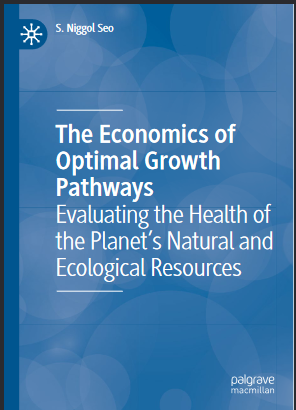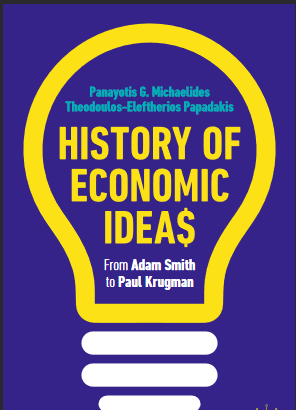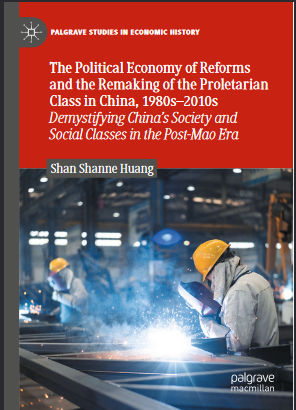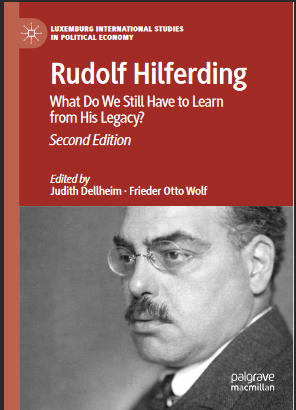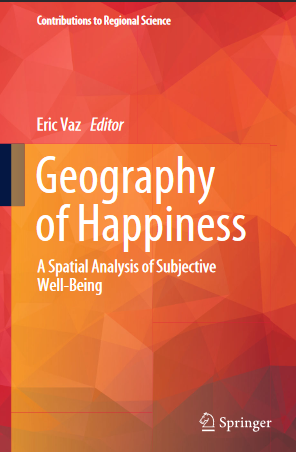موضوعات
آموزش و پرورش
ادبیات و زبان
پزشکی، دندانپزشکی و داروسازی
تاریخ و جغرافیا
داستان و رمان
دیگر
دین و فلسفه
روانشناسی
ریاضیات و آمار
سلامتی، تناسب اندام و رژیم غذایی
شیمی و پلیمر
علوم اجتماعی و حقوق
علوم زیستی و بیوتکنولوژی
فیزیک و نجوم
کامپیوتر و اینترنت
کتابهای کودکان و داستان
کسب و کار و اقتصاد
کشاورزی و دامپزشکی و غذا
معماری
مهندسی و فناوری
هنر و تئاتر
محصولات
Development Delusions and Contradictions An Anatomy of the Foreign Aid Industry - Original PDF
نویسندگان: خلاصه: xix Around 1700 almost everyone on earth was poor or destitute, and Thomas Hobbes’ phrase about life as “poor, nasty, brutish and short” certainly hit the mark. Perhaps only one-tenth of the world’s population was living what could be considered anywhere near comfortable lives. At least, this is what most economic historians will tell you. Jumping ahead 250 years, one could definitely say two completely dif- ferent worlds had emerged—a prosperous West and a definitely lagging Rest. The reasons for this ascendency of the West were due to processes and factors that, even today, are not well understood, but this huge West– Rest economic divide led to the realization that this gap was one of the great issues of the times, one that needed to be addressed as part of any new world order. Thus, by 1950 it could be said that the Development Era began. Some 70 years later, after untold machinations and lots and lots of money, the West is still very much at it. Western nations and institutions constructed increasingly sophisticated systems to redress this divide, based originally on the idea that transposed expertise and capital was what was needed to help nations build modern economies, to prosper, and eventually to be self-sustaining. Not only would these ‘emerging’ nations become partners in global prosperity; they would become great consumers as well and, through the miracles of free trade, economies of scale and comparative advantage, the West as well as the Rest would benefit. Yet what sounded so clear and noble back at the start of the Development Era, and what has remained, at least ostensibly, the philosophical bedrock of helping poor nations, has had to face a very rocky road, to say the leasThe Economics of Optimal Growth Pathways Evaluating the Health of the Planet’s Natural and Ecological Resources - Original PDF
نویسندگان: خلاصه: If you are a natural resource manager of, say, four acres of cropland or two hectares of forest stand, how would you manage it over your planning time horizon? This is the first and most fundamental question you have to answer in your brain before you get your hands and feet down and dirty. Any reasonable answer would encompass many future time periods, that is, beyond the single present time period, as well as a possibility of convert- ing it to another land use at one future period or even selling it (Ricardo 1817; von Thunen 1826; Faustmann 1849). The economics of optimal growth pathways, the book in your hands or on your kindle presently, is written to provide a rational answer to this question faced by the respective natural resource manager. The scope of this book is, however, far greater than cropland farming or forest manage- ment. This book starts with “four acres” of cropland in Chap. 2, continues to the nation’s economy from Chap. 8 onwards, and ends big with the planet’s atmosphere and the global economy from Chap. 11. The purview of this book falls on the planet’s resources and the economic systems built upon it.History of Economic Ideas From Adam Smith to Paul Krugman - Original PDF
نویسندگان: خلاصه: xv Introduction Economic Science is the Social Science that studies the activities of people associ- ated with the creation of goods and services, with the real-world economic and financial transactions, both at the individual and collective levels. Economic Science is based on one or more theories, which are shaped, co-constructed or replaced with each other with the aid of quantitative analysis (mathematics, statistics, economet- rics, experiments, etc.). Economic Theory, in turn, is an abstract description of the functioning of the extremely complex real world, where new scientific knowledge does not emerge from ‘nowhere’ but arises out of existing knowledge, in a dialectical relationship with the ‘existing’ and very often to its negation. Therefore, science develops and evolves as a ‘living organism’, and often one scientific theory is followed by another in continuity, extension or even opposition to the previous one. Therefore, in order to have a body of knowledge for understanding Economics, we must delve into the various individual ‘truths’ of each theory and, therefore, we must look back to the work of earlier thinkers, within a science that is constantly evolving. This journey of the formation of Economic Theory cannot be seen independently of its social context, since it is within this context that Economic Science has devel- oped, in response to the social conditions that prevailed and their evolution. Therefore, an Economic Theory without knowledge of the deeper internal as well as external causal relationships that have shaped the existing theories would lead to a sterile view.Political Economy of Gender and Development in Africa Mapping Gaps, Conflicts and Representation - Original PDF
نویسندگان: خلاصه: This volume on ‘Political Economy of Gender and Development in Africa; Mapping Gaps, Conflicts and Representation’ is driven by issues rather than abstract theories on gender and development. The book offers clear dis- cussions of central issues of conflict, representation, accessibility and avail- ability of resources to materialise gender justice and ensure rights of women in different spheres of private and public lives. The book helps us to think and understand different issues and challenges of gender and development in Africa. The aim of this book is to focus on threads con- necting with the present needs of women to a possible future emancipa- tion of women from the institutions, structures and processes that perpetuate poverty and accelerate different forms of uneven development. The ideals and practices of both gendered development and patriarchal policy processes as contested domains, where capitalism, patriarchy, class, race and other state power structures are undermining women’s empow- erment within existing political, economic, social, cultural and religious systems.The Gas Industry in Latin Europe Economic Development During the 19th and 20th Centuries - Original PDF
نویسندگان: خلاصه: ix Ana Cardoso de Matos is a professor in the Department of History at Évora University (Portugal), and a member of the Research Centre Interdisciplinary Center for History, Cultures and Societies (CIDEHUS/ UE). Her research interests are focused on urban history, history of tour- ism, history of technology, engineering and industry. She is a member of the board of the International Railways History Association (IRHA), Associação Portuguesa de História Económica e Social (APHES). She is also a member of editorial or scientific boards of several journals: HoST— Journal of History of Science and Technology, Patrimonio Industriale AIPAI (Italy), e-Phasistos. Revue d’histoire des techniques/Journal of History of Technology, Annales Historiques de l’Électricité, Transportes, Servicios y Telecomunicaciones, MIDAS-Museus and Estudos Interdisciplinares. She was a visiting professor at the École des Hautes Études en Sciences Sociales—Centre Mauric Halbwachs EHESS-Paris (2010), and Centre Koryé EHESS-Paris (2012). Her articles have appeared regularly in both national and international journals, and she is the author or co-author of six books and participated in some collective books.The Political Economy of Reforms and the Remaking of the Proletarian Class in China, 1980s–2010s - Original PDF
نویسندگان: خلاصه: CHAPTER 1 Introduction On 1 July 2021, Xi Jinping stated in his speech at the conference of cele- bration of the one-hundredth anniversary of the founding of the Chinese Communist Party (CCP) that the Reform and Opening Up and socialist modernisation is one of the greatest achievements of the CCP.1 In the speech, he said the People’s Republic of China (PRC) “achieved the implementation from the highly centralised planned economic system to the dynamic system of a socialist market economy” (shixian le cong gaodu jizhong de jihua jingji tizhi dao chongman huoli de shehui zhuyi shichang jingji tizhi). Raised up in 1978, the Reform and Opening Up (gaige kaifang ) has lasted for 44 years now, as has the state’s reform of the economic system. As Xi mentioned in his speech, due to the reform of the economic system, China has become the second-largest economy in the worldRudolf Hilferding What Do We Still Have to Learn from His Legacy? - Original PDF
نویسندگان: خلاصه: Editors and authors are, of course, grateful for the interest of our readers that has made it possible to realise a second edition now. We have made use of this happy occasion to correct mistakes we had overlooked in the first edition, to actualise the texts wherever needed, and to add four texts: one by Michael R. Krätke on the still unpublished notes of Hilferding’s last manuscript which had been published post-humously (discussed as such by F. O. Wolf), and another one, also by Krätke, on Hilferding’s cor- respondence; plus a presentation of Krzywicki, the Polish ‘equivalent’ to Hilferding, by Toporowski, as well as a contribution by the editors open- ing a perspective on Varga. We hope to fuel the incipient debate on Hilferding by providing access to these materials—which are not merely of biographical relevancy. We also have added a contribution on Eugen Varga, leading on to the next collection of texts planned in this series. All authors have had the occasion to revise their texts according to the need they could see for this. Accordingly, the new edition will serve as a use- ful tool for further developing the debate on Hilferding, after it had been unblocked from political fetters resulting from older political antagonisms. We have become aware that there is an important and specific debate on Hilferding in Japan. Minoru Kurata and Masaaki Kurotaki should at least be mentioned here. Unfortunately, we have not been able to find a Japanese author for presenting this debate authentically, for which we only Preface to the second edition xviii PREFACE TO THE SECOND EDITION have passing references in the volume. This remains an open challenge for further research and debate.1 In finishing this volume, while the terrible ‘military operations’ gener- ated especially by Putin and his narrow power circle are unfolding, we want to underline the deep internationalist character of our work aiming at strengthening critical thinking and emancipatory-solidarityGeography of Happiness A Spatial Analysis of Subjective Well-Being - Original PDF
نویسندگان: خلاصه: Recent advances in spatial analysis have led to a growing interest in applying geocomputation methods to complex issues (Du et al., 2020), often defined over large datasets framing socioeconomic variables (Ekbia et al., 2015) and the natural environment (Bryan et al., 2011). Much of this work has been carried out to optimize decision-making and lead to a better quality of life, economic growth and social stability (Higgins et al., 2014; Rosu et al., 2015; Ahlfeldt et al., 2020). Thanks to the advances of computational power, spatial analysis has reached a new stage, where nonlinear modelling approaches combined with stochastic modelling allow for a better understanding of the geographical environment (Silva et al., 2020) and there- fore foster more accurate decision-making (Carver, 2019). This decision-making has focused predominantly on sustainable development, leading to better life quality, where spatial information on the natural environment has brought a key role, partic- ularly in ecology, to understand the present and offer a more sustainable future. From an anthropocentric perspective, wellbeing is the relation of humankind’s social, economic, and environmental stability, maximizing the opportunities for sustainable development while leading to better life quality. This holistic approach of wellbeing closely remExplorations in Marx’s Theory of Price—Why Marx Is Still Relevant for Understanding the Modern Economy Volume I: Money and Money Prices - Original PDF
نویسندگان: خلاصه: Preface This book is the first volume of a three-volume series borne out of a dissatisfaction I felt after writing Marx’s Theory of Price and its Modern Rivals, 2011. The dissatisfaction came from an awareness that a number of aspects of Marx’s theory of price required greater attention than I was able to accord them in this work. These included his analyses of money, profits, and the cyclical movement of the capitalist economic system. Although I was aware of this neglect while writing the book, I felt it did not do serious damage to my main purpose in writing it; to refute what I considered to be unwarranted charges of unintelligibility, inconsistency, and irrelevance levelled against Marx’s explanation of price. I now feel these omissions are consequential, and undermine my defence of Marx’s theory of price in the book. My hope is that this volume and the next will remedy the shortcomings of Nicholas (2011). As the title of the present work suggests its purpose is to expand on Marx’s theory of price by expanding on his explanation of money. The second volume builds on this by expanding on his explana- tion of profits and the movement of prices over cycles. The third volume extends this explanation to the level of the world market, explaining inter- national value and price, world money and exchange rates, and the cyclical movement of world market prices.Destructive Coordination, Anfal and Islamic Political Capitalism A New Reading of Contemporary Iran - Original PDF
نویسندگان: خلاصه: xi The term Anfal in the title of this book is not familiar for the general readership and its meaning cannot be easily understood by referring to English dictionaries. What is Anfal? If you launch an internet search on Anfal, you will encounter two main strands of literature. The first one relates to the Kurdish genocide by Saddam’s regime in the late eighties, and the second is about the eight Surah (chapter) of the Koran known as ‘Al-Anfal’. As Kurdistan regional government has aptly underlined, in Kurdish society, the word Anfal has come to represent the entire genocide over decades. Anfal was the term used by Saddam Hossein to describe a series of eight military campaigns conducted by the Iraqi government against rural Kurdish communities in Iraq, which lasted from February 23 to September 6, 1988.1 The campaign took its name from Surah al-Anfal in the Koran. Al-Anfal literally means the spoils of war (bounties) and was used to describe the military campaign of extermination and looting commanded by Ali Hassan al-Majid, the cousin of Saddam Hossein. As President of Iraq, Saddam Hossein frequently used religious language when describing the actions of his Ba’athist regime (see Johns, 2006), portraying Arabs as true defenders of Islam and Kurds as infidels.2آیا کتاب مورد نظر هنوز بر روی سایت قرار نگرفته است؟ جای نگرانی نیست! کافی است بر روی گزینه سفارش کتاب کلیک کرده و درخواست خود را ثبت کنید. در کمتر از چند ساعت کتاب شما را آماده خواهیم کرد.

